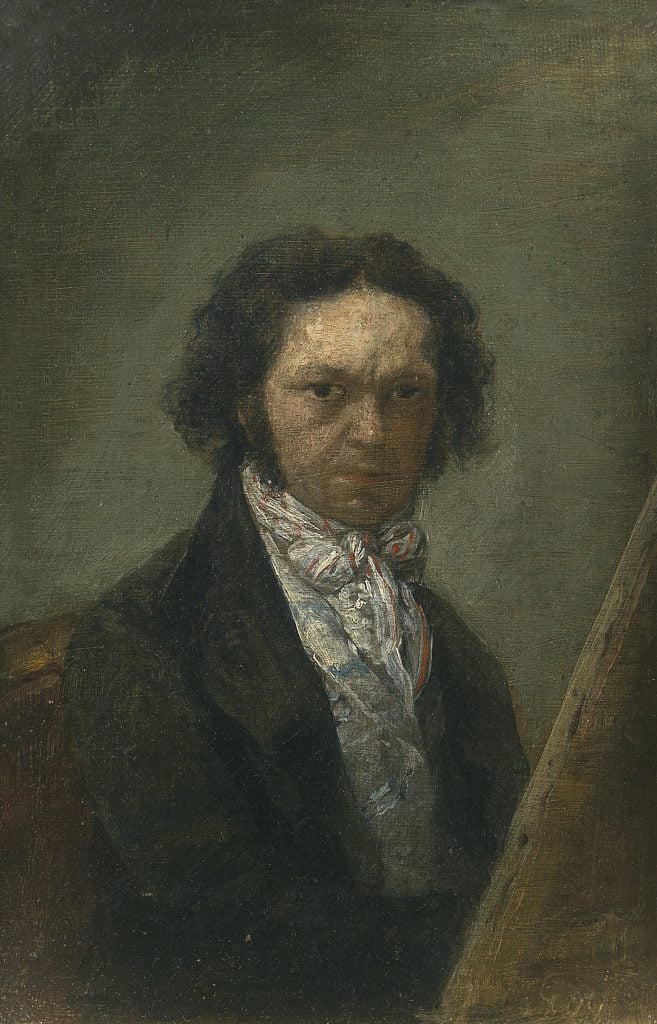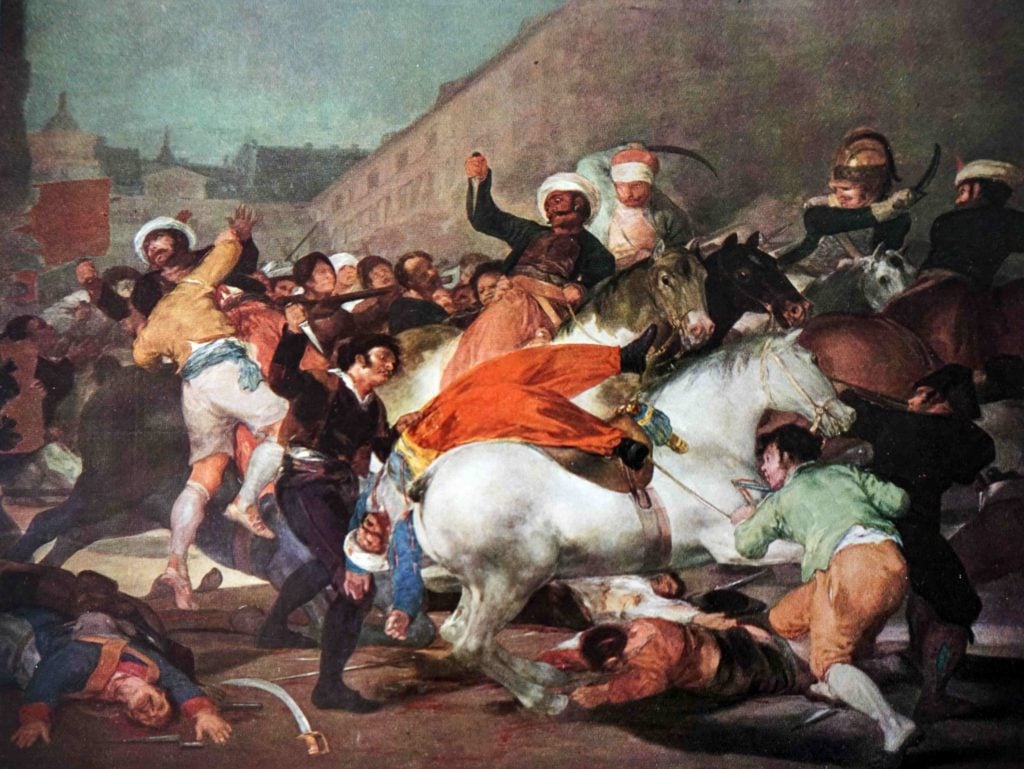Art World
Art Bites: The Conflict That Transformed Goya’s Creative Journey
Once a beloved court painter, Goya in his later years turned his hand to anti-war works.

Once a beloved court painter, Goya in his later years turned his hand to anti-war works.

Vittoria Benzine

The romantic brushstrokes and stark realities in Francisco Goya’s The Third of May (1814), a pivotal canvas depicting the public executions of Spanish freedom fighters by French troops, solidified its reputation as the first modern painting. Up until then, military artworks typically highlighted heroism, but Goya insinuated in his work that everyone loses when politics turns to violence. In fact, Goya was drawing his own deeply personal experience.
By the time he made the painting, Goya had already ascended society’s greatest heights, learned from leading intellectuals, and faced his own mortality. Thus, The Third of May also marked a turning point in Goya’s practice, as he prepared to hand the mantle off to the next generations of artists, like Pablo Picasso and Édouard Manet, who drew directly from this work.

Francisco Goya, The Third of May 1808 (1814). Photo: Universal History Archive/Universal Images Group via Getty Images
Goya started his practice at 14, apprenticing under a forgotten painter. After a decade of rejections, Goya earned enough clout in Italy to start his own art career back in Spain. Then, in 1773, he married the sister of the lead artist at the Spanish court, who helped get him a job at the royal tapestry factory, which later got him elected to Madrid’s Academia.
In the 1780s, he became Madrid’s favorite society portraitist, and in 1786, Charles III appointed him painter to the King. When Charles IV was crowned in 1789, he appointed Goya his court painter.
Charles IV’s reign ended in March 1808, when his subjects defected in favor of his son and rival, Ferdinand VII. Europe was five years deep into the Napoleonic Wars by then—part of the Spaniards’ ire, in fact, had arisen from prime minister’s Manuel de Godoy’s decision to let French troops cross Spain to attack Portugal. Spotting Spanish instability, France invaded them too. Napoleon convinced Charles IV and Ferdinand VII to come to Bayonne under the ruse of reaching an agreement, then crowned his brother, Joseph Bonaparte, king of Spain.

Francisco Goya, The Second Of May 1808, The Charge Of The Mamelukes (1814). Photo: Universal History Archive/ Universal Images Group via Getty Images
On May 2 (now a public holiday in Spain), the citizens of Madrid caught wind of France’s scheme to move Charles IV’s daughter out of Spain. Revolts broke out across the city. The vastly larger French forces squashed them, then rounded up those arrested with arms during the uprising for public executions. Goya pledged allegiance to Joseph Bonaparte, although historians still debate the move, as the hints of satire seen in Goya’s royal portraits may have indicated his complicated relationship with power. The artist spent much of the occupation recording the turmoil in a famous print series titled “The Disasters of War.”
The U.K. helped end the Peninsular War in 1814. Once Ferdinand was restored to the throne, he asked Goya to create two works honoring Spanish tenacity—one centered around the events of May 2, and another around the executions of May 3. Ever since, historians have unpacked Goya’s apparent belief that there truly were no heroes, and how his point enhanced the work’s power.
The French occupation didn’t radicalize Goya—he produced his Caprichos satirizing Spanish society before the 1800s. But the artist never returned to court. In 1816, he made a print series around bull fighting, and another in the spirit of Caprichos. In 1819, the grave illness that left him deaf in 1792 returned and nearly killed him again. Goya eventually did pass away in 1828, but his critical spirit lived on in antiwar artworks like Manet’s Execution of Emperor Maximilian (1867–69) and Picasso’s Guernica (1937). These artworks would outlast the conflicts that inspired them.
What’s the deal with Leonardo’s harpsichord-viola? Why were Impressionists obsessed with the color purple? Art Bites brings you a surprising fact, lesser-known anecdote, or curious event from art history.